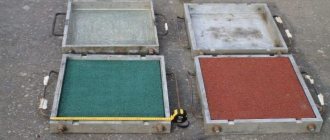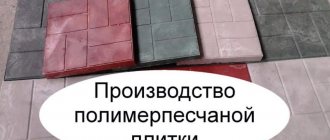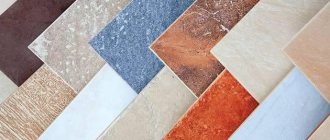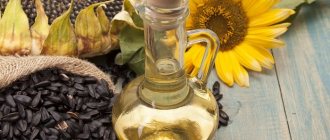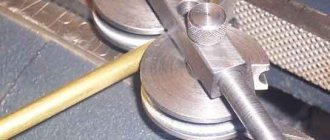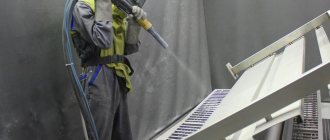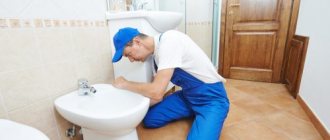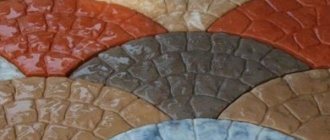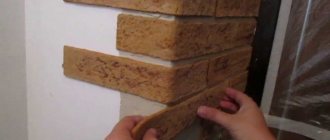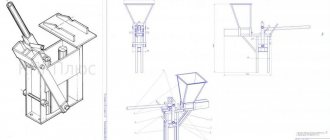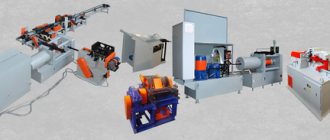Raw materials for the production of rubber coating
To set up the production process, you will need to purchase the following materials:
- crumb rubber (colored and black);
- dyes;
- polyurethane glue.
The main raw material is crumb rubber. Mainly, it consists of used tires. The key to the strength and durability of crumb rubber is the high quality of both natural and artificial rubber, as well as softening oils and fillers that are used in the manufacture of tires.
Crumb rubber is produced as follows. First, waste rubber products are collected at a specially designated site. Then, from the place where the crumb rubber is stored, it is delivered by forklift to the workshop.
There it is loaded into a special installation that processes rubber products. The process of producing crumb rubber of a certain fraction starts. Finished products are packed into bags and a forklift transports them to warehouses.
What are rubber tiles made of?
The main raw material for the production of tiles is crumb rubber from car tires or simply crushed rubber. As a standard, it is divided according to quality, size and production method, and this is what determines its price. Crumbs can be purchased at wholesale prices from organizations specializing in rubber processing, which have also recently begun to develop. The approximate price of a ton of crumbs is 15 thousand rubles.
Many enterprises today still purchase not ready-made crumbs, but the tires themselves, so that they can be processed later on themselves. Cooperation takes place with recycling stations or landfills, where you can purchase old tires.
In addition to regular rubber, you need to purchase polyurethane glue and dyes.
Equipment for the production of rubber tiles
When purchasing this type of equipment, each entrepreneur primarily focuses on the amount of start-up capital. The market today offers a wide range of equipment of this profile.
So, what equipment will you need to open your own enterprise for the production of tiles from crumb rubber? The standard technological complex includes the following components:
- Mixers (six pieces). They are needed for the process of mixing various ingredients.
- Thermal cabinets (or drying chamber). Here the raw materials will be subjected to heat treatment.
- Six fixing stands for tiles.
- Forming tables (three to six pieces will be needed).
- Mixer platforms.
- Press (hydraulic model) for the production of rubber tiles. This machine will provide the process of molding products.
- Molds They will serve for the manufacture of necessary products.
- Conductor. It is necessary for the formation of technological holes.
This is the minimum set of components for the production line, which will allow you to start the process of manufacturing rubber tiles. This equipment will allow us to produce products of varying thickness and density.
Video: equipment for the production of rubber tiles.
Production Features
The price of finished products is based on the materials used. The more ingredients used in the production of the tile, the more expensive it will be in finished form. The average retail price of finished colored tiles can be approximately 1,500 rubles per square meter.
When producing products from crumb rubber, it is necessary to strictly adhere to the production technology:
- Preparatory stage. At this stage, work is carried out to remove the metal parts of the tires. Next, mechanical processing is carried out using cryogenic technologies to obtain crumbs measuring 1-4 mm.
- Mixture preparation stage. Using a mixer, mix the crumb rubber, dye and adhesive until smooth. This technology allows you to produce tiles of various colors.
- The final stage. Using a vulcanizing press, the prepared mass is given the required thickness and size. For this purpose, the method of cold or hot pressing is used. The first method allows you to increase productivity. The second one helps make production cheaper.
The use of the cold pressing method allows us to obtain high quality products with good resistance to environmental influences. The product receives high density, strength and flexibility.
Equipment and price
Regardless of the type of production , be it a private business or industrial production, you will certainly need equipment for the production of rubber tiles.
Equipment for the production of rubber tiles usually includes:
- Mixer for crumb rubber. It is also called a construction mixer. A mixer is needed to prepare a homogeneous mass from the initial components: crumb rubber, dye, polyurethane-based glue. Such a device allows you to quickly combine all the ingredients into a homogeneous mass without the use of physical force from a worker. This device can be considered the most expensive. You can purchase such a device for 1,800,000 rubles.
- Vibrating sieve. This device is a grid system. This device is used to separate crumb rubber into fractions. The average cost of this equipment is 130,000 rubles.
- Hydraulic Press. This machine is necessary to produce tiles of the required shape. To produce different types of tiles, you need to purchase different molds. This machine will cost about 300,000 rubles.
- Drilling machine. This device allows you to make holes for attaching finished material. For large volumes of work, you can purchase equipment for 500,000 rubles.
As additional equipment for rubber tiles, you will need to purchase a heating cabinet, a platform for a mixer, a molding table, and stands for fixing tiles.
The purchase of all equipment for medium-sized production, taking into account its delivery and setup, will cost about 2,000,000 rubles. But it will not be possible to start production if there is a lack of raw materials. For production you will need crumb rubber, dyes and glue .
The average cost of a ton of crumb rubber is 19,000 rubles. Depending on the choice of pressing (cold or hot method), the cost of the glue will range from 140-200 rubles per kilogram. To produce multi-colored tiles, you will need to purchase dyes. The price for 1 kg of dye varies between 80-190 rubles.
Selecting a room
It will not be possible to open a full-fledged production without the availability of premises of the required size. Its size is determined by the scale of the products produced. According to environmental safety requirements, the facility for the production of such products must be located in a suburban area. There should not be a residential area near its location.
The rent must be reasonable. When renting an object, you should take into account not only its area, but also its height. These parameters are necessary for equipment placement. It is recommended to choose a room with office rooms so that all employees can be located in the same area and control the tile manufacturing process. It is advisable to choose an object located near transport routes.
Production flaws
When starting a new business, you may encounter some risks:
- Lack of qualified personnel. In this case, you can recruit employees with subsequent retraining.
- Seasonal demand for products. Any finishing materials may be in seasonal demand. Usually, after winter, people begin to repair and improve their home areas. Therefore, in order to obtain maximum benefits, it is recommended to start new production with the onset of warm days.
- Equipment breakdown. Selecting equipment for the production of products requires special care. You should also stock up on contacts of equipment repair specialists to avoid long downtime.
Production technologies
When producing two-layer tiles, for a softer and cleaner top layer you will need fine colored rubber. For a dense bottom base layer, you will need black coarse crumbs (0.2-1 cm).
The creation of each layer of crumb rubber involves a separate production process. It is assumed that the composition of the lower layer may include textile inclusions, metal elements and other impurities.
At the initial stage of production, a mixture is prepared with the addition of glue and pigment. All ingredients are mixed as thoroughly as possible. Then the resulting raw materials are poured into molds that have the required parameters and a given shape.
The formation of products is achieved by pressing. After this, you need to carefully remove the tiles from the molds. If the work is done without a flaw, then the high-quality tiles are packaged and sent to a warehouse or transported directly to the customer.
Methods for producing tiles from crumb rubber:
- hot pressing;
- cold pressing.
The first - high-temperature - method is highly productive, but the tiles obtained by hot pressing lose their durability and acquire the smell of burnt rubber.
With cold pressing, both process productivity and product quality can be achieved. The main thing is to comply with all technological requirements.
Video: comparison of hot and cold pressed rubber tiles.
Description and characteristics of tiles made from rubber waste
These tiles are available in different shapes and thicknesses. The last parameter is responsible for the strength and durability of the product; the cost of the tile also depends on it. Most often, products with a thickness of 10–90 mm are produced; thicker products can also be produced upon request.
Rubber crumb tiles have many advantages:
- has a long (at least 20 years) operational period;
- safe from injury;
- environmentally friendly;
- can be made in various shapes and colors;
- easy to install and maintain;
- aesthetic;
- non-slip when dry or wet.
Areas of application of rubber tiles
The product is used for:
- children's playgrounds (multi-colored bright products);
- garden plots (mainly green products - matching the color of the grass);
- sports grounds (dark with light markings corresponding to a particular sport);
- street sidewalks (most often these are gray and black options).
A separate product category is tiles in the form of anti-slip coatings for wet areas and overlays for stair steps, as well as a variety of rugs.
Stages of production of rubber tiles using cold pressing method
- Preparing the batch. A line with six mixers will allow you to thoroughly mix all components.
- Putting the mixture into the mold.
- Pressing process. Molds are loaded in ten levels into carts that are subjected to pressing - compression under pressure of up to 5 tons.
- Drying. The carts are placed in a drying chamber for 4-6 hours, where the temperature is set to 60°.
- Unloading carts and removing products from molds.
- Control over the quality of finished rubber tiles.
Advantages of the cold pressing method
- all ingredients are thoroughly mixed, which improves the quality of the product;
- under the press the tile acquires a high density;
- a sauna effect is created in the drying chamber, which promotes good absorption of dyes and glue into the rubber crumbs - this will subsequently affect the strength and flexibility of the tiles;
- Rubber tiles obtained by cold pressing do not have a specific odor and do not suffer from exposure to the external environment.
Franchising
If you wish, you can consider the option of working in a franchise format. In this case, the main stages of organizing and establishing production will be handled by the parent company. Its specialists will advise the aspiring entrepreneur. They will also take care of the search for suppliers of raw materials and buyers of tiles, select and install equipment. The disadvantage of such work is the need to deduct part of the proceeds as payment for franchise services; the advantage is that all possible production and marketing risks will be reduced to a minimum.
The production of tiles from rubber crumbs is a young, but already in demand area with good prospects. Today it is a profitable and relevant production, the product of which is in demand, and the scope of application is constantly increasing.
Cost-effectiveness of the rubber tile manufacturing process
A mini-factory where this equipment will be located can cost a beginning entrepreneur from 2 to 3 million rubles, including VAT and the complex of all work to launch the line.
There is no need to be afraid of the costs of purchasing equipment for the production of rubber tiles and organizing a business in general. They will justify themselves quickly enough. The main advantage of such a line is that it will save on worker labor. Three or four operators will be able to service it.
The profitability of rubber tile production using such equipment will be 40%. With a 22-day work schedule, production can be increased to 3 thousand m2 of tiles per month.
The main thing is competent operation of the equipment and a thoughtful approach to the production process. With the growing demand for rubber tiles and insignificant market competition, there is every reason to count on the success of the enterprise.
Company organizational plan
Registration of a manufacturing enterprise
You can work as an individual entrepreneur or LLC. The required OKVED code is 25.13
The next step is tax registration and concluding agreements with local utility services. You should also obtain permission from the fire authorities.
Room
A workshop for the production of rubber tiles can be located in an industrial zone on the outskirts of a populated area - this way the business owner will save on rent. There should be no residential buildings in the immediate vicinity of the workshop building.
To accommodate the equipment, an area of at least 80 square meters will be required. m, the ceiling height must be at least 3 m, access to power supply lines of the required power is important. A powerful ventilation system is required, since the fumes generated during the production process are very toxic.
With properly organized eye and respiratory protection, the released fumes will not cause harm to employees.
The premises should be divided into zones: administrative, production and storage. In the latter, separate areas must be allocated for storing raw materials and finished products. For work in winter, it is important to have heating. There should be access roads convenient for trucks near the building.
Tips for a beginner rubber tile manufacturer
- When purchasing equipment for the production of rubber paving slabs, you should take a responsible approach to choosing a supplier.
- A conscientious supplier will provide information on the location of sales markets and help create sales plans.
- It would be a good idea for a novice entrepreneur to acquire a list of documents to obtain a certificate.
- The supplier can also provide assistance in purchasing the necessary raw materials for the production of rubber coating.
- You should buy equipment for the production of rubber tiles from a supplier who will not only install it and help launch it, but also provide a guarantee for repair work in the event of force majeure.
The production of paving slabs may be a good business. We recommend reading:
Do-it-yourself paving slab production
Republished by Blog Post Promoter
Scope of application of rubber tiles
Most often this coating is used:
- When arranging playgrounds for children.
- When arranging the territory of a kindergarten.
- During the construction of stadiums: rubber coating is laid on football and basketball fields.
- To decorate the area near a pond.
- For arranging a dacha area.
Products can be sold through private companies, construction retail chains, and construction organizations. In addition, laying the coating can be done with your own hands.
What is used as raw material?
Is it possible to produce rubber tiles with your own hands at home? This article will help answer this question. In order to learn the material described, it is important to solve certain problems. Find the right raw materials, study the stages of making rubber tiles, understand the features of the production process and purchase the necessary equipment. Let's describe each point in more detail.
What is used as raw material? Crumb rubber made from used car tires, crushed by crushing. The further technology for producing rubber tiles is extremely simple: rubber fractions are mixed with polymer glue, dyes and modifying fillers. The result is the correct consistency, ready for further molding.
